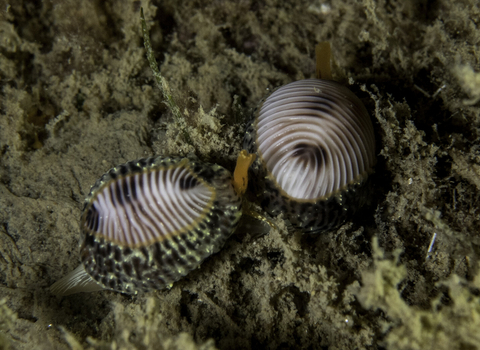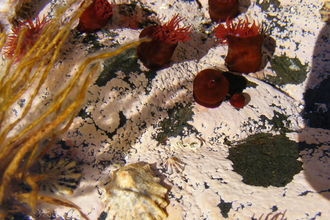
Julie Hatcher
Spotted cowrie
This small sea snail is easily identifiable by the 3 brown spots on the top of its shell.
Scientific name
Trivia monachaWhen to see
January to DecemberSpecies information
Category
Statistics
Length: 1cmConservation status
Common



